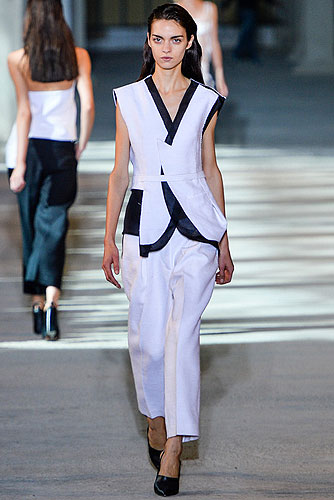







































This season, Ennio Capasa brought his women's show back to Milan after 23 years of presenting in Paris.
www.costumenational.comMilanFashion WeekFashion Brand
This season, Ennio Capasa brought his women's show back to Milan after 23 years of presenting in Paris.
This season, Ennio Capasa brought his women's show back to Milan after 23 years of presenting in Paris. He justified the move as his own contribution to Italy's regeneration. "If Milan is strong, everything is strong," said Capasa. But it wasn't just Milan that gained from the relocation. Going back to his fashion roots seemed to refresh Capasa as well.
Deconstruct/Reconstruct was the collection's theme. It fitted the show space, a huge raw concrete bunker that may eventually become a museum. And it also gelled with an inspiration of Capasa's, the work of young conceptual artist Giulio Frigo. An image of one of his 3-D graphite installations was printed on the invitation. Frigo's world-taken-apart was echoed in Capasa's own dissections of clothing: "My experience of Italian tailoring reloaded in different ways," he called it. So jackets and dresses were deconstructed and put back together with proportions shifted in often fiercely asymmetric ways. If the result occasionally felt like it was trying too hard, it had the paradoxical effect of making the more straightforward outfits in the collection—like the white side-slit tabard over a white skirt, or the kimono-like top in black leather over cropped pants—that much more appealing. Capasa's yen to experiment yielded results with sheer techno-organza shells rendered decorous with handmade brushstrokes (difficult but delightful), or a group cut from a tweedy linen-cotton that had a utilitarian glamour we've never seen from this designer before. He liked the idea of work. On his mood board was Peter Lindbergh's famous photo of Kate Moss as a worker girl in dungarees. "She's always made an effort to connect with the time in which she lived," Capasa explained. "And that's my goal too."